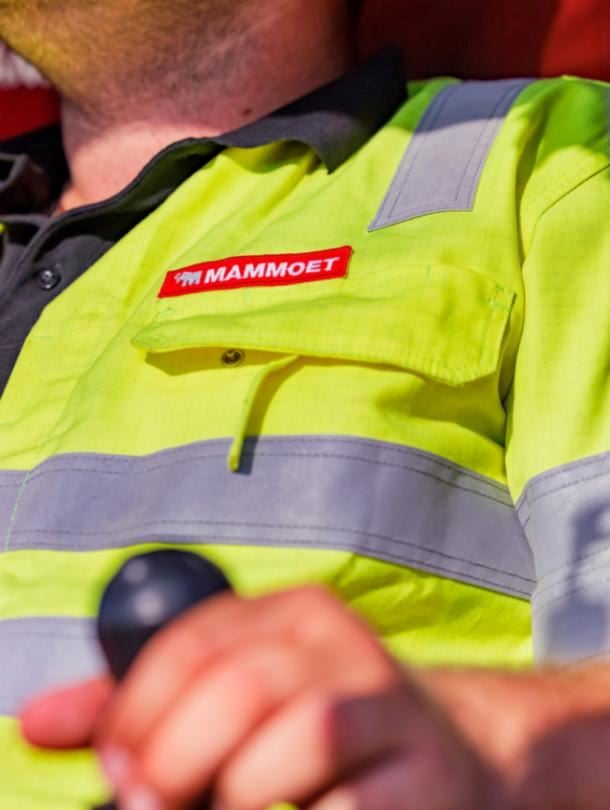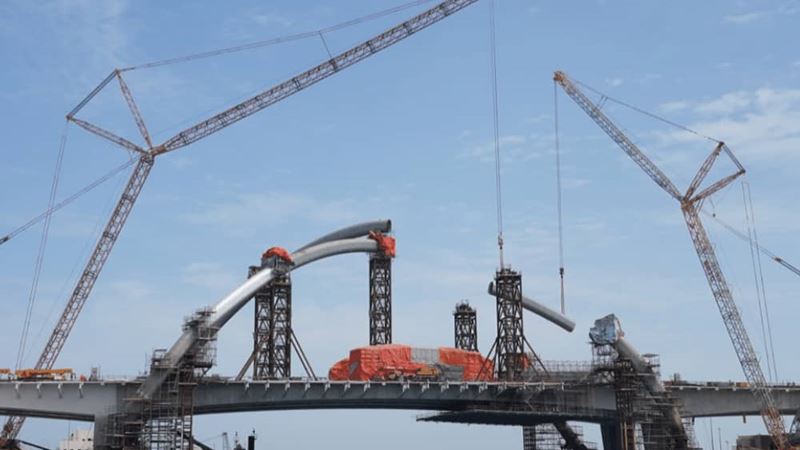
Sector:
Civil Engineering
Expertise:
Jacking
Heavy lifting
Benefits:
Increased safety
Rapid response
Location:
Sweden
Spain
When an incident occurred for a Finnish construction company during a bridge launch in Umeå, Sweden, in September 2020, experts from Mammoet were called in to save the bridge and help carry out its construction safely.
This helped the construction company to avoid pulling down the bridge, and to salvage most of its original structure. The bridge was part of a new highway that bypasses the city of Umeå, at the western link over the Umeå River in northern Sweden.
Forming a section of a relief road to alleviate congestion in the city, the bridge is 464 meters long, divided into four spans, and weighs 3,050 tonnes. Its layout is located over a regular bend (800-meter radius) and a downward slope of 2.25%.
The bridge was being constructed using an incremental launching process. The first stage begins with the front section, which is placed on a launching pad at one side and then pulled forward over its supporting piers.
With each new piece that gets connected to the previously launched section, the bridge increases in size and continues to be pulled forward until it reaches the opposite side of the river.
Rafael Martinez, Sales Manager at Mammoet, explains the incident that occurred before Mammoet became involved. “During the second launching stage, the bridge moved forward in an uncontrolled manner for more than 130m. This caused it to rest in an unstable condition. In addition to this, when the bridge dropped, the impact caused serious damage to the sections of the steel deck that were resting on the first two concrete piers. It also caused the bridge to twist out of alignment and the backend to fall from the abutment.”

Mammoet engineers responded quickly, traveling to the site just a few weeks after the incident.
Before their visit, they had already developed and designed a salvage solution using the limited information available about the bridge and the incident.
With further analysis carried out on site, it was determined that the solution they proposed was the optimal one for the job, and so it was implemented.
“We proposed to install several temporary shoring towers with hydraulic capacity,” explains Martinez.
“This way we could lift the complete bridge and release the load from the concrete piers. It also allowed us to split the bridge into three sections and for the non-damaged portions of the deck to be separated from the damaged ones. The concrete piers supporting the bridge are over 30 meters high. Working at this height is neither easy nor safe. Therefore, we suggested that the most damaged section be cut and pulled back to the launching pad so that repairs could be carried out at ground level.”
Salvaging the bridge
To achieve this, temporary shoring towers were erected around the two concrete piers to release the bridge and allow for the necessary cuttings and repair operations to happen. A cantilever gantry was also used to lift the back section off the ground and raise it up to the launching level at the abutment, close to the launching pad.
A third tower was added to support the nose of the bridge, a fourth between the abutment and the first pier, and a fifth was used to support the final launching stage of the bridge once the repairs had been completed.
In addition to lifting the bridge, it also needed to be realigned and straightened back to its due geometry. It was completely twisted and moved in all directions because of the incident.
Martinez explains how this was achieved: “On top of each tower we installed a system of hydraulic jacks. These could move the bridge up and down, right and left, and back and forth. The system is computer-controlled, so we had constant, real-time monitoring of all the loadings of the bridge. This meant we could move it in any direction. This was one of the main challenges of the project.”
For normal bridge launches, the jacks have a maximum stroke of around 60 to 70 centimeters. This would not be sufficient in this case.

Mammoet Project Manager Elena Muñoz Collado, explains how this challenge was met. “We used a wide range of Mammoet standard launching equipment but had to adapt it for this specific case to create a new solution that combined two different jacking systems. The usual deformations that occur during a typical launch do not require large jack strokes.
However, in Umeå we required a jacking system that was able to lift to a height of more than 2 meters. We implemented a common feature of our climbing jacks into the launching bearings jacks. In doing this, we created a jacking system that was able to climb up to the required theoretical height and could be still used as a support for the launching bearings.”
Rescuing the project
This complex engineering rescue project is not yet fully completed. The bridge is being salvaged and its construction is being completed with Mammoet’s help. “We came on site just three weeks after the incident,” says Martinez. “The client had used a drone to get a better understanding of what had happened and assess the damage.
We helped them to get a clear idea of how to tackle the works and rescue the bridge.” Muñoz Collado and her team have also succeeded in creating a brandnew jacking system for bridge launches thanks to this innovative project".




